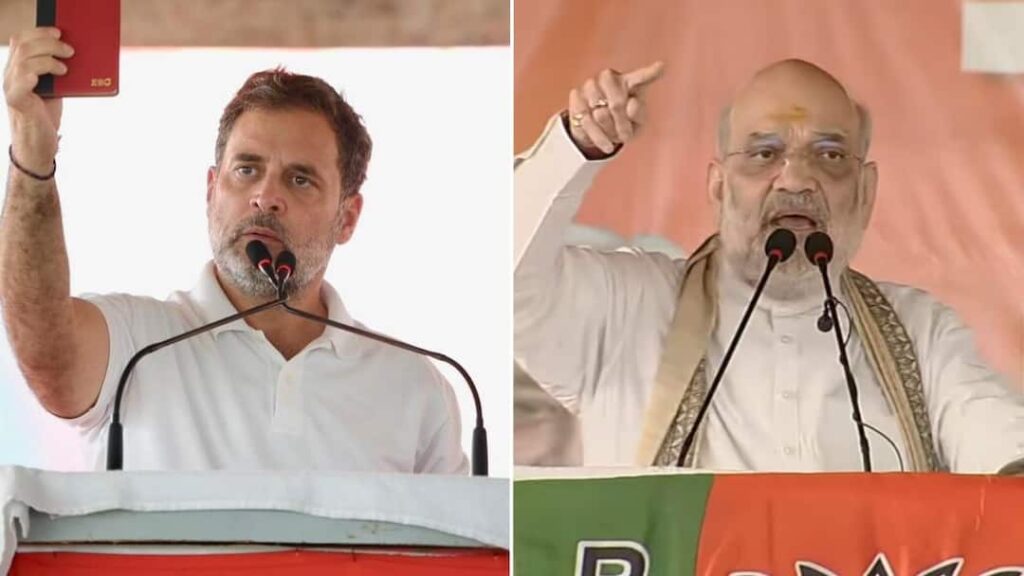Bihar Elections: Bihar’s high-octane election campaign drew to a close on Sunday evening, setting the stage for the second and final phase of polling in the closely contested assembly elections. The state has witnessed an intense, month-long political duel marked by fiery speeches, sharp personal attacks, and ambitious promises from rival parties.
The first phase of polling, held on November 6, saw a record voter turnout of 65 per cent. The second phase, covering 122 constituencies, will take place on November 11, with results to be declared on November 14. Key seats up for grabs include Chakai, Jamui, Dhamdaha, and Chhatapur, where ministers and senior party leaders are fighting crucial battles that could tilt the balance of power.
Heavyweights storm the campaign trail
The final day of canvassing saw a last burst of activity from national leaders, with Union Home Minister Amit Shah, Defence Minister Rajnath Singh, and Congress leader Rahul Gandhi leading the charge. Each sought to rally support in what has been described as one of Bihar’s most heated electoral battles in recent years.
While the campaign has ended, the real test for the parties begins Tuesday, when voters will decide who governs Bihar for the next five years.
Bihar election: Top takeaways
- Congress MP Rahul Gandhi campaigned in Kishanganj and Purnea districts of Seemanchal, a region with a significant Muslim population crucial to the INDIA bloc’s prospects. Gandhi, who addressed 15 rallies, urged Bihar’s youth to stay vigilant against electoral malpractice, warning, “They’re trying to steal your future, that’s why they’re stealing votes.”
- Home Minister Amit Shah, who spent several days in the state, addressed gatherings in Sasaram and Arwal—areas where the BJP seeks to strengthen its footing. He accused the Congress and RJD of opposing the removal of “infiltrators” from the voter list.
- Defence Minister Rajnath Singh spoke at rallies in Aurangabad and Kaimur, both bordering Uttar Pradesh, taking sharp digs at RJD patriarch Lalu Prasad Yadav and his son Tejashwi Yadav.
- Prime Minister Narendra Modi spearheaded the BJP’s campaign with 14 rallies and a roadshow, marking one of the most extensive outreach efforts by a sitting prime minister in the state.
- Congress general secretary Priyanka Gandhi Vadra campaigned in Bihar for the first time, addressing 10 rallies and leading a roadshow. One of her scheduled meetings, however, was cancelled due to bad weather.
- The BJP’s campaign featured a long list of high-profile leaders, including party president JP Nadda, Union ministers Nitin Gadkari and Shivraj Singh Chouhan, and chief ministers Yogi Adityanath, Himanta Biswa Sarma, and Mohan Yadav. Bollywood-turned-politicians Ravi Kishan and Manoj Tiwari also joined the push, alongside NDA allies like Maharashtra Deputy CM Eknath Shinde and Andhra Pradesh minister Nara Lokesh.
- JD(U) chief and CM Nitish Kumar, seeking a fifth consecutive term, conducted a low-key but determined campaign. Despite weather disruptions, he continued to hold roadshows and small rallies across the state.
- RJD’s Tejashwi Yadav led a passionate campaign as the opposition’s chief ministerial face, drawing large crowds and energising supporters with his confident appeal for change.
- Jan Suraaj Party founder Prashant Kishor, known for orchestrating successful campaigns for top leaders, focused on a traditional door-to-door strategy in his home state. He criticised Rahul Gandhi’s outreach to young voters, questioning, “Why would Gen Z listen to him?”
- The Congress accused the BJP-JD(U) alliance of “looting” Bihar for two decades, alleging rampant corruption and negligence. Party leader Jairam Ramesh asserted that voters would “liberate” the state from this “trouble-engine government.”

